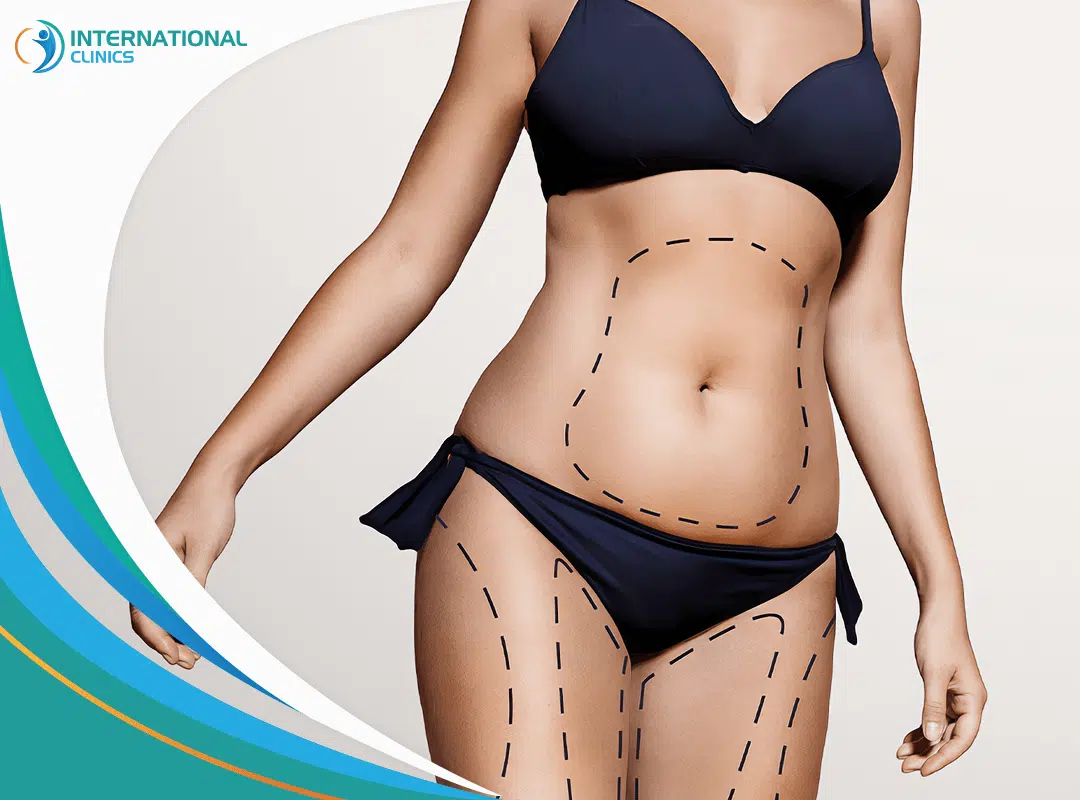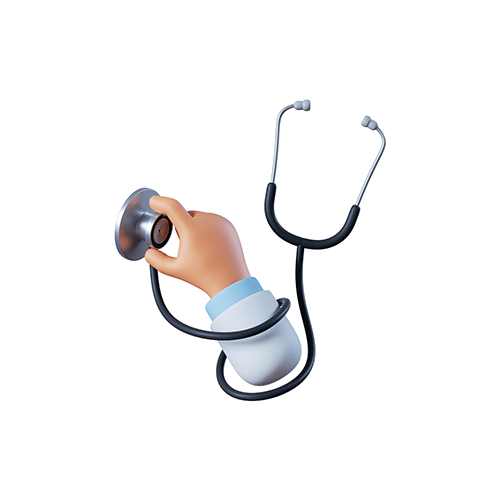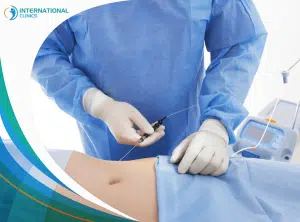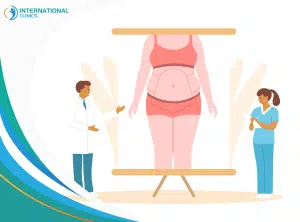Recovering from liposuction is a crucial aspect of the overall procedure, but how long it takes to recover from liposuction exactly? Let’s find out.
Liposuction recovery time can vary based on factors like the extent of the procedure and whether it was a full-body liposuction or targeted areas. While some individuals may experience a quicker recovery, others may require more time to heal fully.
During the recovery period, it’s important to follow your surgeon’s instructions diligently to ensure optimal healing and minimize any potential complications. With proper care and attention, you can expect to see improvements in your body contour over time.
So, let’s delve into the details of liposuction recovery and explore what you can anticipate during this transformative journey.
Factors Affecting the Duration of Liposuction Recovery:
Extent & Type of Liposuction Procedure
The extent and type of liposuction procedure performed can have a significant impact on the duration of recovery. Different techniques, such as traditional liposuction, laser-assisted, or ultrasound-assisted liposuction, may require varying amounts of time for healing.
For instance, more extensive procedures involving multiple areas of the body will necessitate a longer recovery period compared to smaller-scale treatments targeting specific regions.
Individual Healing Abilities & Overall Health
Each person’s body responds differently to surgery, which means that some individuals may experience faster healing than others. Factors such as age, pre-existing medical conditions, and lifestyle choices can impact how quickly your body recovers from liposuction in Turkey. Generally speaking, individuals who are in good overall health tend to recover more swiftly.
Postoperative Instructions
Your surgeon will provide you with specific guidelines tailored to your situation that should be followed closely. These instructions typically include wearing compression garments as directed, taking prescribed medications on time, avoiding strenuous activities or heavy lifting during the initial weeks following surgery, and attending all scheduled follow-up appointments with your surgeon.
Preoperative Preparation
Before undergoing liposuction surgery, it is essential to properly prepare yourself for the procedure. This preparation plays a crucial role in ensuring a smooth recovery and optimal results. Here are some important points to consider during your preoperative preparation:
1- Medical Evaluations
The first step in preparing for liposuction is to undergo medical evaluations. These evaluations help your surgeon assess your overall health and identify any potential risks or complications that may arise during or after the surgery. Be honest and transparent with your surgeon about your medical history, current medications, and any underlying conditions you may have.
2- Discussion of Medications & Supplements
Certain medications and supplements can interfere with the surgical process or increase the risk of complications during recovery. Your surgeon will provide instructions on which medications should be discontinued before surgery and which ones can be continued safely.
Get your free medical consultation now!
3- Smoking Cessation
If you are a smoker, quitting smoking before undergoing liposuction is highly recommended. Smoking hampers the body’s healing process by constricting blood vessels, reducing oxygen supply, and increasing the risk of infections.
By quitting smoking prior to surgery, you improve your chances of a faster recovery with fewer complications.
4- Avoiding Specific Medications
There are certain medications that should be avoided before liposuction surgery as they can increase bleeding risks or interact negatively with anesthesia. Nonsteroidal anti-inflammatory drugs (NSAIDs), aspirin, and herbal supplements should typically be avoided in the weeks leading up to surgery.
5- Preparing Your Surgical Area
In addition to medical considerations, it is also important to prepare your surgical area for liposuction. This involves maintaining good hygiene by thoroughly cleaning the area before surgery as per your surgeon’s instructions.
You may also be provided with specific guidelines on what to wear on the day of the procedure and how to prepare yourself mentally for the surgery.
Immediate Postoperative Period After Liposuction Surgery
During this period, patients may experience swelling, bruising, and soreness. It’s important to understand what to expect and how to promote healing during this time. This period includes:
Immediate Monitoring & Pain Management
After undergoing liposuction surgery, the first few hours are crucial for your recovery. Your blood pressure, heart rate, and oxygen levels will be closely monitored by medical professionals to ensure your well-being.
During this initial period, it is common to experience discomfort or pain. Your plastic surgeon may administer pain medication to help alleviate any postoperative pain.
Resting
Resting is of utmost importance during the first hours after liposuction surgery. Your body needs time to recover from the invasive procedure and adjust to the changes made. By resting adequately and adhering to these guidelines, you give your body the opportunity it needs to heal effectively.
Managing Swelling, Bruising
Swelling and bruising is a common side effect of liposuction. The body reacts to the trauma caused by the procedure by sending fluid to the treated area. This swelling can make the area appear larger than before surgery, which can be disconcerting for some patients. Bruises may vary in size and color but will typically fade within a few weeks.
Monitoring Fluid Intake & Output
During the first hours after liposuction surgery, it is essential to monitor your fluid intake and output. Excessive fluid retention can be a sign of complications such as seroma formation. If you notice any abnormal or excessive fluid accumulation, contact your plastic surgeon immediately for further guidance.
Wearing Compression Garments
To aid in reducing swelling, wearing compression garments as instructed by your surgeon is essential during the immediate postoperative period. These garments provide gentle pressure on the treated areas, helping to minimize swelling and improve circulation. They also help contour the body as it heals.
Engaging in Light Activities
Light activities like walking can actually aid in circulation during the immediate postoperative period. Walking helps prevent blood clots and promotes healthy blood flow to the treated areas. It’s important to approach these activities cautiously. Avoid strenuous exercises or activities that may put excessive strain on your body.
Stages of Surgery Recovery and Tips for Better Recovery:
Immediate Postoperative Stage
After undergoing liposuction, the immediate postoperative stage is crucial for your recovery. It’s important to follow these tips to ensure a smooth recovery:
- Rest and relax
- Stay hydrated
- Take prescribed medications as directed
Early Stage of Recovery
As you progress through the early stage of recovery, you’ll start noticing improvements in your condition. Here are some tips to help you during this phase:
- Maintain a nutritious diet
- Avoid strenuous activities
- Follow your surgeon’s advice
Mid-Term Recovery
During the mid-term recovery phase, most patients experience significant improvement in their overall well-being. To optimize your recovery during this period:
- Continue following a healthy lifestyle
- Gradually reintroduce physical activity
- Keep up with regular follow-up appointments
Long-Term Recovery
The long-term recovery phase is when you’ll start seeing the final results of your liposuction procedure. Here’s how you can ensure a successful long-term recovery:
- Stick to a healthy lifestyle
- Seek advice from healthcare professionals
- Be patient and realistic
Speak with certified surgeons and medical consultants!
How Long It Takes to Recover from Liposuction?
The recovery timeline and each individual’s healing process vary, but most patients can resume normal activities within a few weeks. there are general guidelines that can give you an idea of what to expect. Within a few weeks following the procedure, most patients can gradually resume their daily activities.
Swelling and bruising typically subside significantly within the first month after surgery.
Within the first month after liposuction surgery, you can expect a significant reduction in both swelling and bruising. As your body heals, these side effects gradually diminish, revealing more defined contours in the treated areas. However, keep in mind that a complete resolution may take several months.
Full results may take several months to manifest as the body continues to heal.
While you may notice improvements shortly after liposuction surgery, it is essential to understand that full results take time. As the weeks and months pass, you will gradually witness the transformation of your body as the swelling subsides completely, revealing the desired contours.
Mid-Term Recovery
Incorporating Light Exercises
As your body continues to heal, incorporating stretching and walking into your daily routine can be beneficial. These low-impact exercises not only aid in reducing swelling but also prevent stiffness and promote overall well-being.
Maintaining a Balanced Diet
Proper nutrition plays a vital role in providing essential nutrients that aid in tissue repair and regeneration. Focus on consuming a variety of fruits, vegetables, lean proteins, and whole grains while avoiding processed foods high in sodium or sugar. Staying hydrated is equally important as it helps flush out toxins from your body and keeps your skin healthy.
Embracing a Healthy Lifestyle
Avoid habits such as smoking or excessive alcohol consumption as they can hinder the healing process by affecting blood flow and delaying tissue repair. Getting enough rest is also crucial during this phase as it allows your body ample time for recovery.
Regular Check-Up Visits
Throughout your mid-term recovery, it’s important to attend regular check-up visits with your surgeon. These visits allow them to monitor your progress, address any concerns you may have, and provide guidance on how to optimize your healing journey.
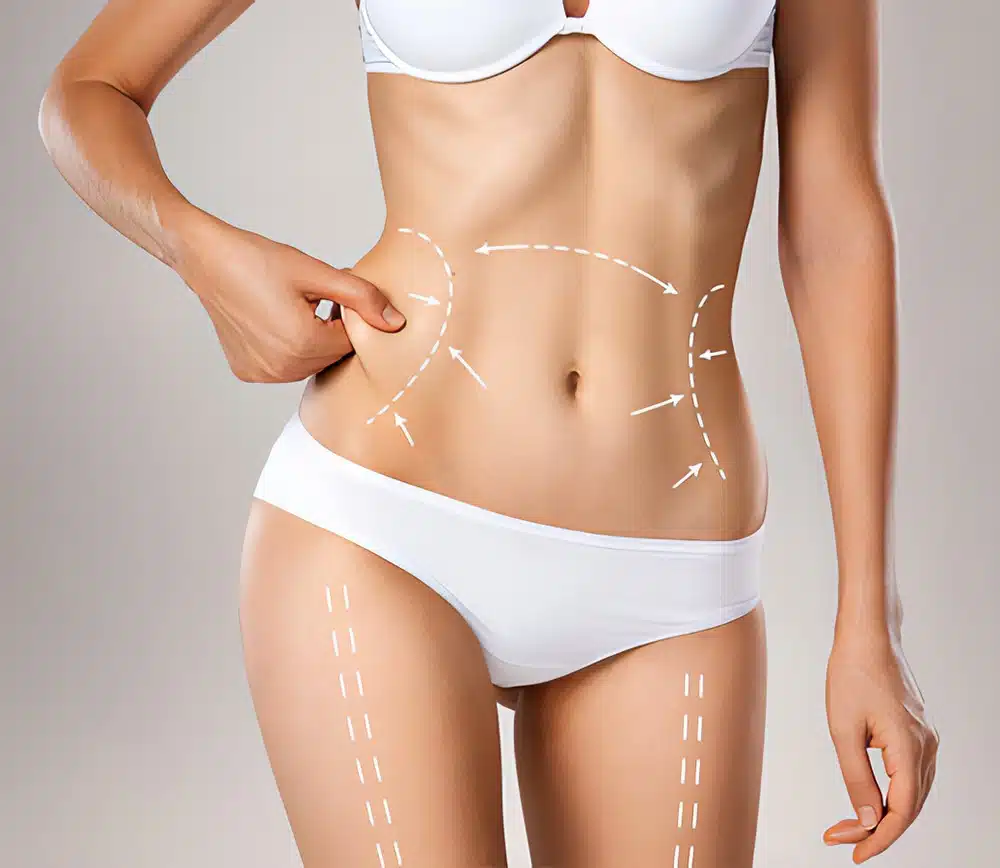
Long-Term Recovery
Complete Resolution of Swelling & Stabilization of Results
One of the primary goals during this phase is the complete resolution of swelling and the stabilization of results. While initial swelling may subside within a few weeks, it can take several months for the body to fully heal and for the final outcome to become apparent.
Regular Physical Activity for Maintaining Liposuction Results
Regular exercise not only helps maintain weight loss achieved through liposuction but also promotes overall health and well-being. It can prevent weight gain in untreated areas and enhance muscle tone, resulting in a more sculpted appearance.
Adhering to a Healthy Lifestyle with Proper Nutrition
To ensure long-lasting outcomes from liposuction, it is essential for patients to adhere to a healthy lifestyle that includes proper nutrition. Hydration is equally important during recovery as it aids in flushing out toxins from the body.
Safety Precautions & Support During Long-Term Recovery
it’s important to be aware of potential complications or concerns that may arise. During the long-term recovery period, you should reach out to your healthcare provider if you experience any unusual symptoms or have concerns about your healing progress.
Wearing Compression Garments & Caring for Incisions
Wearing compression garments and taking proper care of your incisions are crucial aspects of the liposuction recovery process. These steps aid in reducing swelling, promoting healing, and ensuring optimal results. Here’s what you need to know about compression garments and caring for your incisions:
1- Wearing Compression Garments
| Reduce Swelling | These specialized garments apply gentle pressure to the treated areas, minimizing post-operative swelling, improving blood circulation, and preventing fluid buildup. |
| Promote Healing | Compression garments also support the healing process by providing stability and reducing movement in the treated areas. This helps protect delicate tissues, allowing them to heal properly |
| Follow Care Instructions | Your surgeon will provide specific guidelines on when and how long to wear the compression garment. It is essential to follow these instructions diligently for effective results. |
| Avoid Tight Clothing | It is important to avoid tight clothing that may irritate or rub against your incision sites. opt for loose-fitting attire during the initial stages of recovery. |
2- Caring for Incisions
| Keep Them Clean | Proper hygiene is vital for wound healing. Gently clean your incision sites with mild soap and water. Avoid harsh scrubbing or using abrasive materials that could damage sensitive skin. |
| Keep Them Dry | Moisture can increase the risk of infection. After cleaning, ensure that the incision sites are thoroughly dried using a clean towel or gauze. |
| Avoid Excessive Sun Exposure | The UV rays can cause discoloration or hyperpigmentation on healing skin. If you must be outside, use sunscreen with a high SPF and cover the incisions with clothing or bandages. |
| Follow Post-Op Instructions | Your surgeon will provide specific care instructions for your incisions. These may include using antibiotic ointment, changing dressings regularly, or avoiding certain activities that could strain the healing tissues. |
| Monitor for Signs of Infection | Keep an eye out for any signs of infection, such as increased redness, swelling, warmth, or discharge from the incision sites. If you notice any concerning symptoms, contact your surgeon immediately. |
Steps to Ensure a Successful Liposuction Recovery:
Maintain open communication with your surgeon
If you have any concerns or questions about your progress or experience unexpected symptoms, don’t hesitate to reach out. Your surgeon is there to provide guidance and support, so keeping them informed about any changes or issues will ensure that you receive the necessary care.
Focus on self-care practices
Self-care plays a vital role in promoting healing after liposuction. Resting is crucial during this time as it allows your body to recover and rejuvenate. Make sure to listen to your body and give yourself ample time for restorative sleep.
Be patient with the healing process
Liposuction recovery times vary depending on several factors including the extent of surgery performed and individual healing capabilities.
It’s important not to rush the process but instead be patient with your body’s natural healing timeline. Remember, everyone heals at their own pace, so comparing your recovery to others may not be helpful.
Stay positive & maintain a support system
It’s normal to experience fluctuations in mood or feel frustrated by temporary limitations. Surround yourself with a supportive network of family and friends who can offer encouragement and understanding during this time.
Staying positive and focusing on the improvements you’ll see in the long run can help you navigate any emotional hurdles that arise.
Keeping Incisions Clean and Dry for Better Recovery:
Taking proper care of your incisions is essential for a smooth and successful recovery after liposuction. You should ensure that your incisions heal properly and minimize the risk of infection or complications.
Cleaning Incisions with Mild Soap and Water
When cleaning your incisions, follow these steps:
- Wash your hands thoroughly before touching the incision site.
- Dilute a small amount of mild soap with warm water.
- Gently apply the soapy water to the incision using a clean cloth or cotton swab.
- Be careful not to rub too vigorously, as it may cause irritation or damage to the area.
- Rinse off any soap residue with lukewarm water.
- Pat the incision dry gently using a clean towel or let it air dry.
Get in touch now!
Avoiding Excessive Moisture in the Incision Area
Excessive moisture in the incision area can hinder proper healing and increase the risk of infection. To promote optimal recovery:
- Refrain from swimming, hot tubs, or submerging yourself in water until your surgeon gives you clearance.
- Keep an eye out for excessive sweating around the incision site and take measures to keep it dry.
- Wear loose-fitting clothing made from breathable fabrics to allow air circulation around the area.
Patting Incisions Dry Gently
After cleaning your incisions, it’s important to ensure they are completely dry before covering them up again. Gently patting them dry helps avoid irritation or damage that could slow down healing.
Here’s how you should proceed:
- Use a clean, soft towel to gently pat the incision dry.
- Avoid rubbing or scrubbing the area as it can disrupt the healing process.
- you can use a hairdryer on a cool setting held at least six inches away from the incision to speed up drying.
If you have any concerns or notice any signs of infection such as redness, swelling, or pus around the incision site, contact your surgeon immediately.
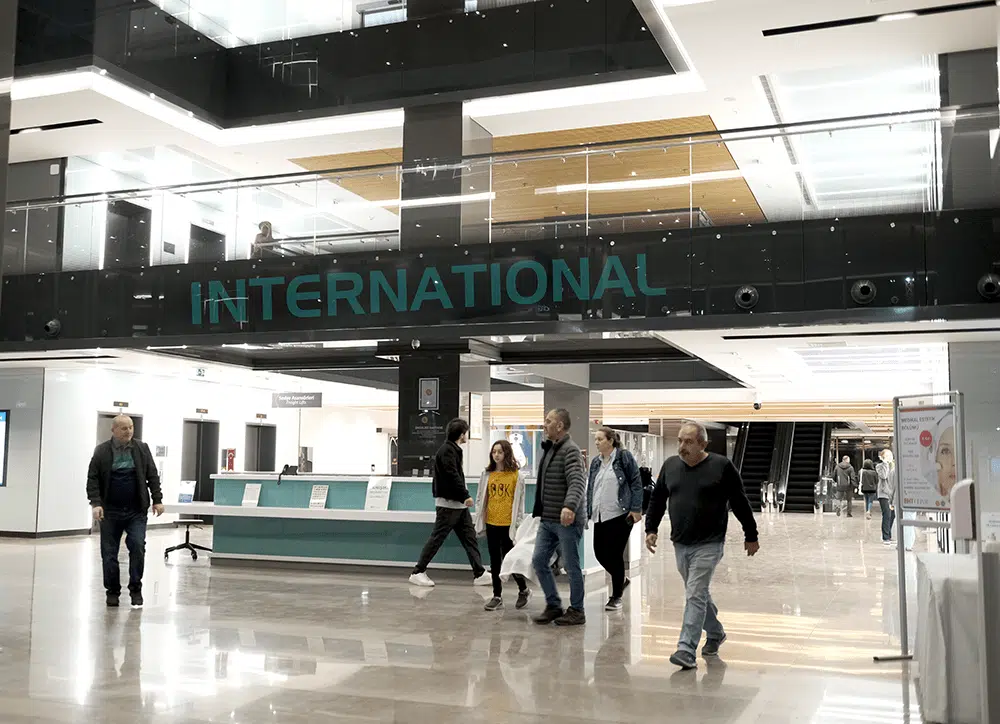
Conclusion: Understanding the Duration of Liposuction Recovery
In conclusion, understanding the duration of liposuction recovery requires considering various factors that influence each individual’s experience. By following preoperative preparation guidelines, adhering closely to postoperative care instructions, managing pain effectively, wearing compression garments properly, keeping incisions clean and dry, resting adequately, and adopting an overall healthy lifestyle during recovery—patients can enhance their chances of successful liposuction recovery.
FAQ
The recovery time for liposuction varies depending on factors such as the extent of the procedure and individual healing abilities. Generally, it takes several weeks to months to fully recover from liposuction surgery.
During the initial hours after liposuction surgery, you should rest and allow your body to begin its healing process. Medical professionals will closely monitor your condition for any potential complications.
Managing pain and discomfort during liposuction recovery involves following your surgeon’s recommendations for medication and incorporating relaxation techniques such as deep breathing exercises or meditation.
Compression garments should be worn as instructed by your surgeon. They help reduce swelling, improve blood circulation, and provide support to the treated areas, resulting in a smoother recovery process.
Keeping incisions clean and dry is crucial for preventing infection, minimizing scarring, and promoting optimal healing. Follow your surgeon’s instructions regarding wound care to ensure a successful recovery.
Read more: Liposuction cost in Turkey
